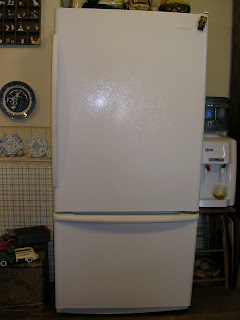Refrigeration entails absorbing heat within a system to generate lower temperatures. The theory of cooling is similar to all systems, whether it’s in a refrigerator for domestic use or industrial refrigeration systems for commercial purposes. Nevertheless, there are important variations among small-scale and large-scale cooling systems, like the area to be covered and safety measures in place. And because of these distinctions, a different kind of coolant should be employed for each. The option in refrigerant will depend on plenty of qualities, which includes boiling point, latent heat of vaporisation, toxicity, flammability, colour and scent, and even stability.
Boiling point is a particularly essential attribute since it will determine how well the refrigerant could take up heat and be converted into vapour. Usually, the best refrigerant for both residential and industrial refrigeration must have a boiling point that is a little below the target temperature. Nonetheless, the boiling point is not necessarily just the attribute that ascertains how good a refrigerant functions at cooling the device - the latent heat of vaporisation is likewise essential. This quality refers to the amount of heat that the refrigerant needs to absorb for it to turn into a vapour; a coolant having a low latent heat can only absorb a little heat before it transforms from a liquid towards a gas, and thus makes for an unproductive cooling substance. On the other hand, substances having a high latent heat can absorb a great amount of heat and thus produce far lower temperatures, causing them to be perfect for refrigeration.
Refrigeration systems should also use the most secure refrigerants attainable to guarantee the health and wellness of the owners. Fundamentally, toxicity of coolants is classified broadly according to the identification of toxic compounds at concentrations less than 400 ppm: Class A (non-toxic), and Class B (toxicity discovered). Concerning flammability, coolants are categorized as follows: non-flammable (Class 1), somewhat flammable (Class 2) and very flammable (Class 3). To help maintain the safety of household owners, coolants for residential refrigeration systems are usually Class A, Class 1 substances. Commercial refrigerator consumers, however, typically make use of more stringent safety measures, and thus can use higher class refrigerants for their cooling systems.
In general, coolants are colourless and odourless. An odourless coolant is much better to prevent the equipment from having a chemical smell always. Nonetheless, coolants with unique odours, such as ammonia, functions as a self-alarming system for important leakages. Colour might be added to the coolant to make it easier to recognize a leak.
And lastly, consumers of refrigeration systems need to look into the stability of the coolant to be employed. Preferably, a refrigerant has to be stable. It shouldn't wear away any part of the system or maybe interact with any kind of chemical substance, oil or lubricant within the pipes. It should also never be remarkably expansive, and it must not decompose with the varying pressures and temperatures.
Source: http://www.ammoniarefrigerationnsw.com.au/ provides an excellent refrigeration plant management having refrigeration specialists focused on operating your system at high effectiveness in order to lessen energy expenses.


No comments:
Post a Comment